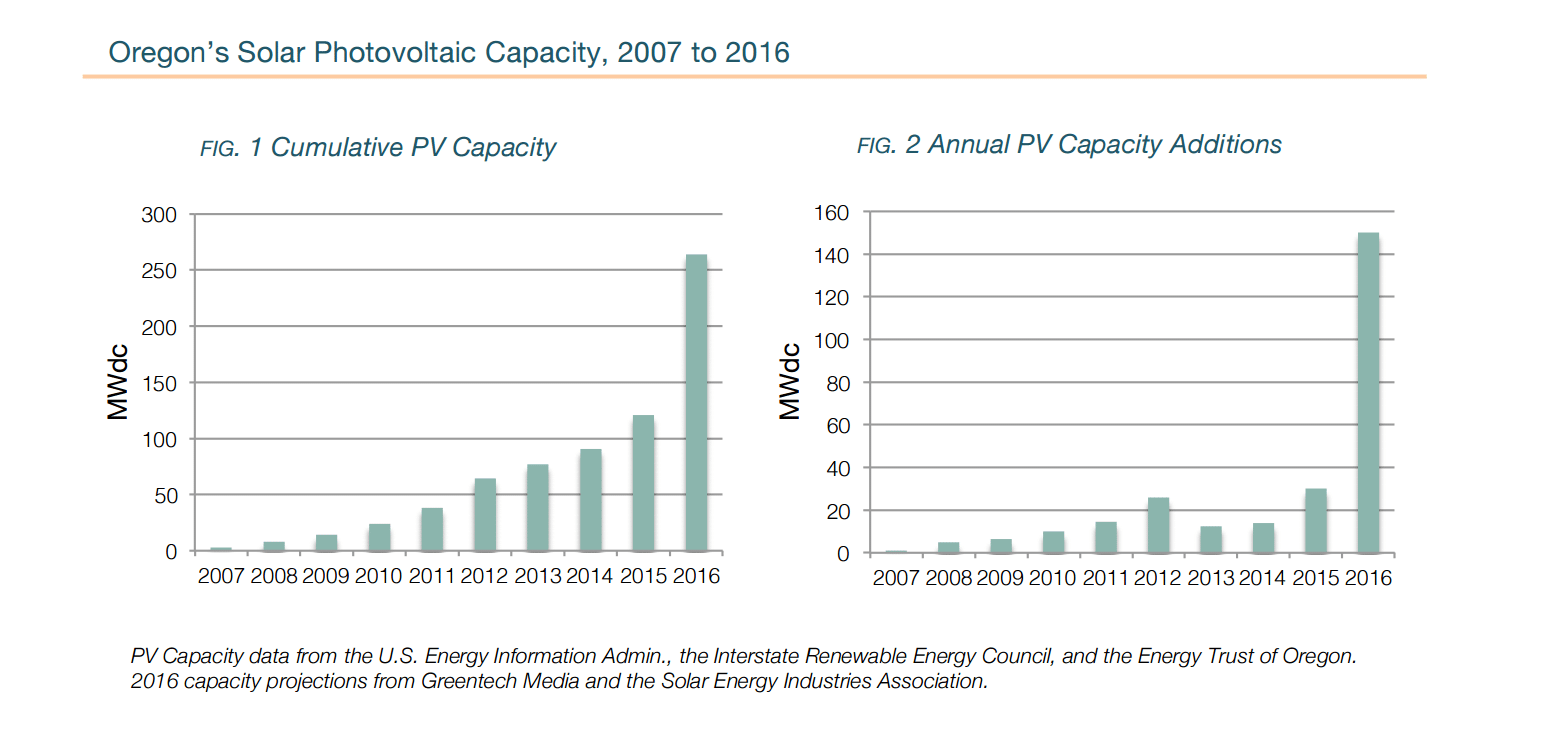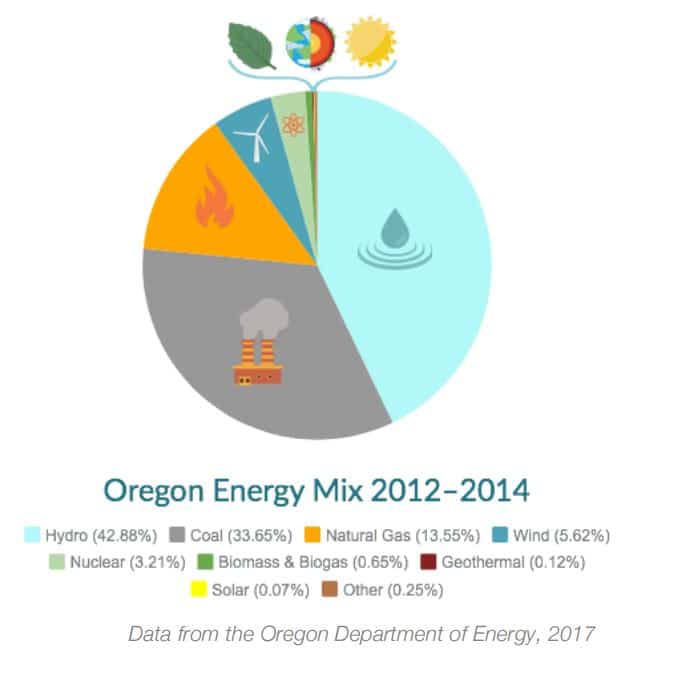If solar advocates in Oregon have their way, the state’s breathtaking scenery will be augmented by enough solar installations to meet 10% of the state’s electricity needs by 2027.
The Oregon Solar Plan, a collaborative study by Oregon Solar Energy Industries Association (OSEIA) and Lewis and Clark Law School’s Green Energy Initiative, offers a roadmap for solar development in the state for the next 10 years. According to the study, solar would be able to power approximately 500,000 Oregon homes if the state follows the path outlined by the study.
Oregon has deployed approximately 264 megawatt (MW)dc of solar PV capacity which, broken down, was comprised of 54 MW of residential solar, 55 MW of commercial solar, and 155 MW of utility-scale solar by the end of last year and added four-times as much solar in 2016 as it had in 2015.

It’s unclear how realistic the plan is, however. The report says almost 50% of Oregon’s electricity is fossil-fuel generated, and solar accounts for only 1% currently. A jump of that size could only be achieved if everything stayed aligned properly optimally for the entire 10-year time period. Still, OSEIA executives remain optimistic.
“The Oregon Solar Plan is our solar community’s path for the future,” said Laurie Hutchinson, OSEIA’s board president. “An energy transition is underway, and solar can and will be a big part of Oregon’s energy future.”

OSEIA says there are four local policies that have helped solar’s expansion in the state, all of which must be maintained to continue the momentum. These include:
- net metering;
- Oregon’s residential energy tax credit;
- the state’s property tax exemption for solar; and
- utility ratepayer incentives.
The study also credits current in addition to federal tax incentives and the Public Utility Regulatory Policies Act (PURPA) of 1978 for adding additional the state-level solar-support policies. OSEIA says the plan will shape their policy and regulatory lobbying strategies for the foreseeable future.

OSEIA also outlines 11 new policy prescriptions that it believes will help the state reach the 4-GW-per-year goal the state will have to meet to reach its 10% threshold, ranging from encouraging community-solar programs to examining the state’s transmission constraints so more solar can be safely added to the grid. Among the association’s recommendations to the state government are:
- Adopt effective community solar program rules;
- Support in-state solar development through a solar capacity standard, renewable energy portfolio standards solar carve-out, or some other similar means to make solar development predictable;
- Enact policies to support commercial solar development;
- Local governments should adopt property assessed clean energy (PACE) programs;
- Adopt solar building standards;
- Determine optimal licensing to ensure a competitive workforce;
- Increase access to training programs;
- Create a plan to ensure adequate workforce levels to achieve targeted installation levels o Create an online landscape-level energy planning tool o
- Coordinate state land use planning goals with energy goals
- Evaluate strategies to increase transmission capacity within the existing system
- Adopt a combination of strategies to mitigate Oregon’s transmission constraints
The study also projects that Oregon’s current solar workforce could nearly double in the next 10 years, growing from 4,500 workers to as many as 8,000 by 2027. According to The Solar Foundation’s National Jobs Census, Oregon supported 872 jobs in the first year of its now annual census, which means in seven years the number of jobs in the state has increased 516%.
“Whether you talk to a small solar installer or large-scale developer, they will tell you that finding qualified workers is a desperate need,” Hutchinson said. “The Oregon Solar Plan underscores the potential for a strong, stable workforce that could be a major presence in the state.”
Oregon currently has approximately 264 MW of solar capacity installed, according to data produced by GTM Research and the national Solar Energy Industries Association.
This content is protected by copyright and may not be reused. If you want to cooperate with us and would like to reuse some of our content, please contact: editors@pv-magazine.com.








By submitting this form you agree to pv magazine using your data for the purposes of publishing your comment.
Your personal data will only be disclosed or otherwise transmitted to third parties for the purposes of spam filtering or if this is necessary for technical maintenance of the website. Any other transfer to third parties will not take place unless this is justified on the basis of applicable data protection regulations or if pv magazine is legally obliged to do so.
You may revoke this consent at any time with effect for the future, in which case your personal data will be deleted immediately. Otherwise, your data will be deleted if pv magazine has processed your request or the purpose of data storage is fulfilled.
Further information on data privacy can be found in our Data Protection Policy.